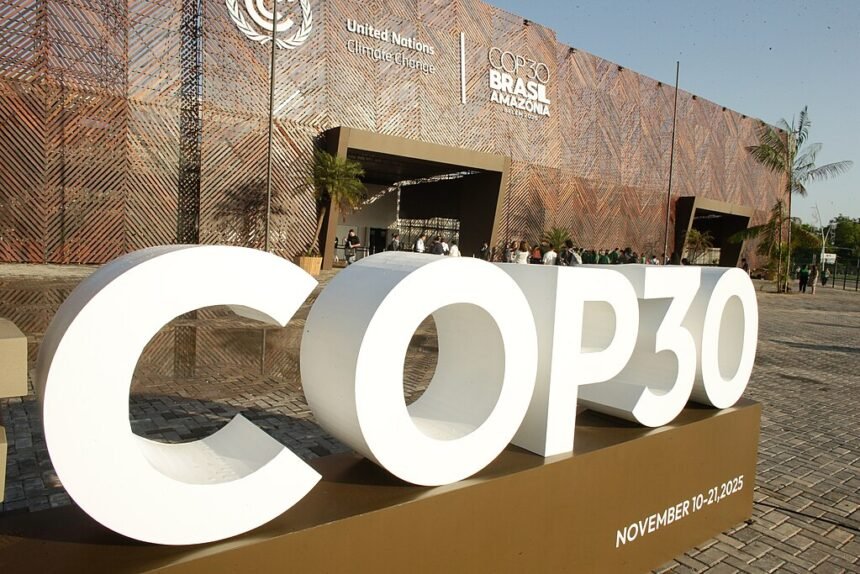Image: Mount Tai( 泰山), Shandong Province
Contributor: Anthony Coles, CEO Green Gold Ventures, Executive Chair TusStar Australia, and Chair Australia China Business Council Green Economy Working group.
Clear Waters and Lush Mountains are invaluable Assets 绿水青山就是金山银山
In the pursuit of sustainable development, China has embarked on a comprehensive strategy to achieve green, low-carbon, and high-quality growth. Central to this initiative is the transformation of key industrial sectors and the adoption of smart agricultural practices.
In my role as Chair of the Australia China Business Council’s Green Economy Working Group, I have been leading efforts over the last three years to raise awareness in Australia of the economic opportunities from this strategic shift, reinforcing the need for a new approach to Australia’s bi-lateral trade & investment with our No.1 trading partner.
This article delves into China’s ambitious plan, with a specific focus on the efforts in Shandong Province, Sister Province to my home State South Australia, and the location of my office in China.
Shandong Province’s Industrial Decarbonisation:
Shandong Province, located in eastern China, is one of the country’s economic powerhouses, with a significant presence in industries such as petrochemicals, manufacturing, and agriculture. However, rapid industrialisation has also led to environmental challenges, including high carbon emissions and pollution. Recognizing the need for change, Shandong has embraced the green growth agenda and prioritised decarbonisation efforts.
Shandong has been actively promoting the use of clean energy sources to power its industries. This includes investments in renewable energy such as wind, solar, and hydroelectric power. By shifting away from fossil fuels, the province aims to reduce its carbon footprint and contribute to national targets for emission reduction. Shandong has made significant strides in expanding its renewable energy installed capacity and has also set ambitious goals for developing its blue economy.
In addition to transitioning to clean energy, Shandong is exploring the deployment of carbon capture and storage (CCS) technology in its industrial facilities.
CCS allows for the capture of carbon dioxide emissions from industrial processes, which are then transported and stored underground, preventing their release into the atmosphere. By investing in CCS infrastructure, Shandong aims to significantly reduce its carbon emissions while maintaining economic growth.
Shandong’s industrial sector is also undergoing a transformation towards greener and more sustainable manufacturing practices. This includes initiatives to improve energy efficiency, optimize production processes, and reduce waste generation. By embracing green manufacturing principles, Shandong aims to enhance its competitiveness while minimizing its environmental impact.
Smart Agriculture in Shandong Province:
In addition to industrial decarbonisation Shandong Province is leveraging technology and innovation to promote smart agriculture practices. Agriculture is a vital sector in Shandong providing food security and livelihoods for the country, and for export. By embracing smart agriculture, the province seeks to enhance productivity, optimise resource utilisation, and mitigate environmental degradation.
Precision Farming Technologies:
Shandong is embracing precision farming technologies such as drones, satellite imaging, and IoT sensors to monitor crops, soil conditions, and weather patterns with unprecedented accuracy. By collecting and analysing data in real time, farmers can make informed decisions regarding planting, irrigation, and pest control, leading to higher yields and reduced resource consumption.
Smart agriculture practices in Shandong also emphasise sustainable land management techniques such as crop rotation, conservation tillage, and biochar utilisation. These practices help improve soil health, reduce erosion, and enhance biodiversity while maintaining or even increasing crop productivity. By adopting sustainable land management practices, Shandong aims to safeguard its agricultural resources for food security and economic sustainability.
Shandong Province is also investing in agricultural innovation hubs, research institutions, and extension services to promote the development and adoption of new technologies and practices. This includes research into drought-resistant crops, bio-based fertilizers, and precision irrigation systems tailored to the region’s specific agro-climatic conditions.
By fostering a culture of innovation, Shandong aims to keep its agriculture sector at the forefront of global competitiveness.
Green Hydrogen:
Shandong Province has been actively pursuing a green hydrogen agenda as part of its broader efforts to transition towards sustainable energy systems.
There have been significant developments:
Shandong is investing in the development of hydrogen production facilities, particularly electrolysis utilising renewable energy sources such as wind and solar power. Shandong aims to leverage green hydrogen as a clean energy source for various industrial applications, including petrochemicals, steel manufacturing, and transportation. By substituting hydrogen for fossil fuels in industrial processes, Shandong can reduce carbon emissions and improve air quality, contributing to both environmental sustainability and economic competitiveness. Shandong is investing in the necessary infrastructure to support the production, storage, and distribution of hydrogen, this includes building hydrogen refueling stations for fuel cell vehicles, establishing pipelines for transporting hydrogen to industrial facilities, and developing storage facilities for maintaining supply stability.
By expanding hydrogen infrastructure, Shandong aims to create a conducive environment for the widespread adoption of green hydrogen across different sectors.
Shandong is also fostering research and innovation in hydrogen technologies, collaborating with academic institutions, research centres, and industry partners to advance the development of hydrogen production, storage, and utilisation technologies. This includes exploring new materials, catalysts, and processes to improve the efficiency and cost-effectiveness of green hydrogen production and utilisation. Shandong is actively engaging in international collaboration and partnerships to exchange knowledge, expertise, and best practices in hydrogen technology development and deployment. By participating in global initiatives and sharing experiences with other regions, Shandong is accelerating its transition towards a hydrogen economy and will contribute to global efforts to address climate change and energy transition challenges.
Blue Economy Ambitions in Shandong:
In addition to traditional renewable energy sources, Shandong is exploring the potential of marine renewable energy technologies such as tidal, wave, and ocean thermal energy conversion (OTEC). The province’s extensive coastline offers ample opportunities for harnessing the power of the ocean, contributing to both energy security and environmental sustainability.
Shandong aims to leverage its rich marine biodiversity and research capabilities to develop marine biotechnology solutions. This includes the cultivation of seaweed and other marine organisms for food, pharmaceuticals, and other industrial applications. By tapping into the potential of marine biotechnology, Shandong seeks to create new economic opportunities while promoting sustainable resource management.
Shandong is home to several major ports, including Qingdao, Yantai, Rizhao and Weihai, which serve as vital hubs for maritime trade and transportation. The province is investing in the expansion and modernisation of its port infrastructure to enhance efficiency, capacity, and connectivity. Additionally, Shandong is promoting sustainable practices in port operations to minimise environmental impacts and support the development of a green and resilient blue economy.
China’s green, low-carbon high-quality growth program represents a bold vision for the country’s future, with Shandong Province playing a crucial role in its implementation. By decarbonising industries and embracing smart agriculture practices Shandong is not only reducing its environmental footprint but also fostering sustainable economic development and improving the well-being of its people.
As the world grapples with the challenges of climate change and resource scarcity, the experience of Shandong Province serves as an inspiration for other regions seeking to achieve a greener, more prosperous future. Through strategic investments, innovation, and international cooperation, Shandong aims to build a prosperous and resilient future while safeguarding its natural resources and coastal ecosystems for generations to come.
The broader China Renewable transition:
China has set ambitious targets for solar photovoltaic (PV) and wind power capacity by 2030 as part of its efforts to expand renewable energy and reduce carbon emissions.
China aims to achieve a total installed solar PV capacity of 1,200 gigawatts (GW) by 2030. This represents a significant increase from the current capacity of around 330 GW and underscores the country’s commitment to accelerating the deployment of solar energy. China is also targeting a total installed wind power capacity of 1,000 gigawatts (GW) by 2030.
These targets demonstrate China’s determination to scale up renewable energy deployment and transition towards a low-carbon economy. Achieving these goals will require sustained investments in renewable energy infrastructure, supportive policies, technological innovation, and international collaboration.
I look forward to bringing you more updates on Australia’s opportunities and successes in contributing to China’s, and the world’s decarbonisation efforts in Future editions.














